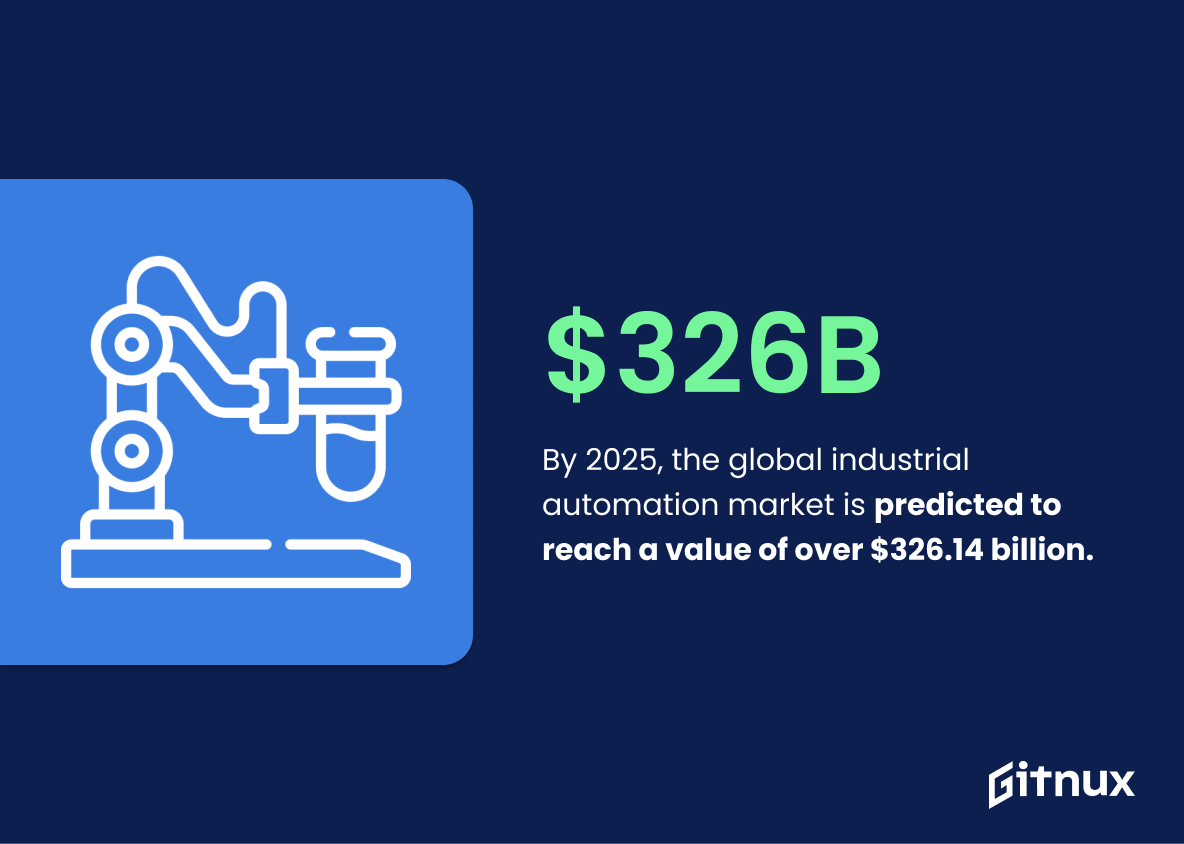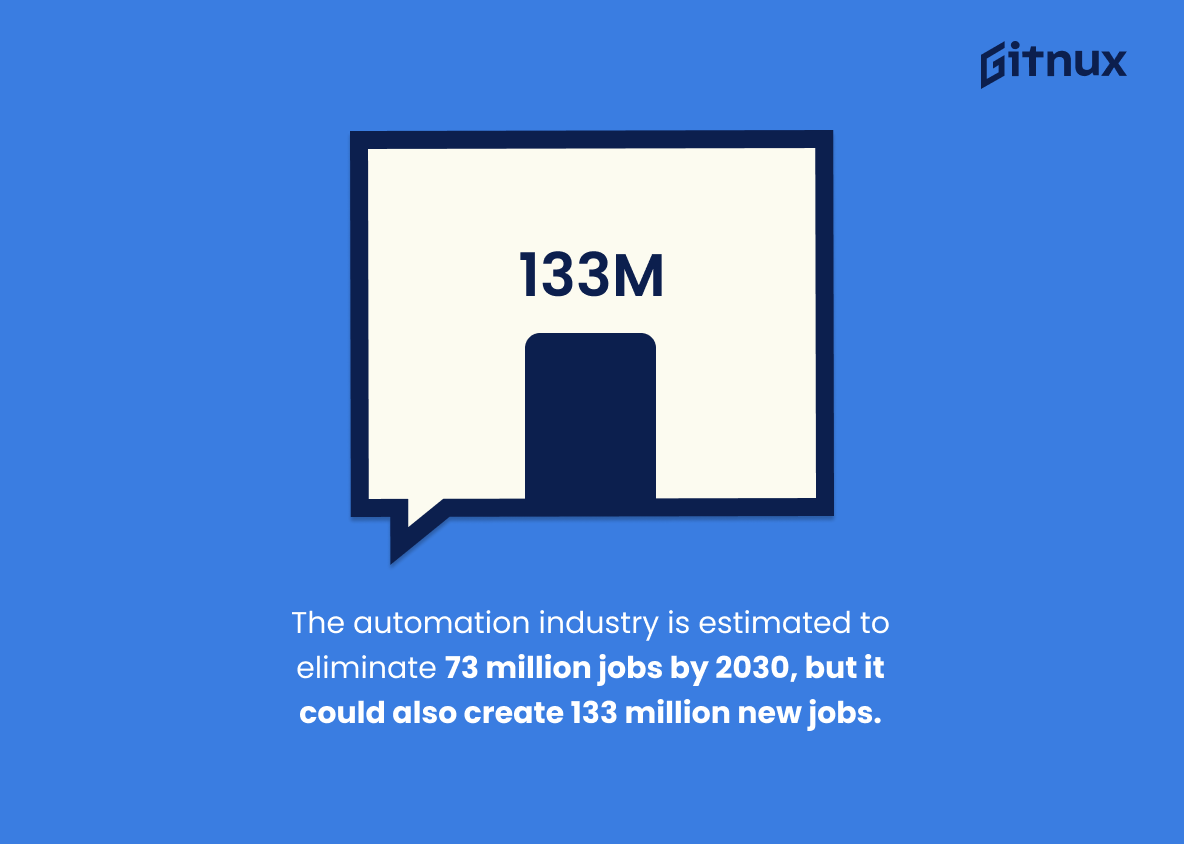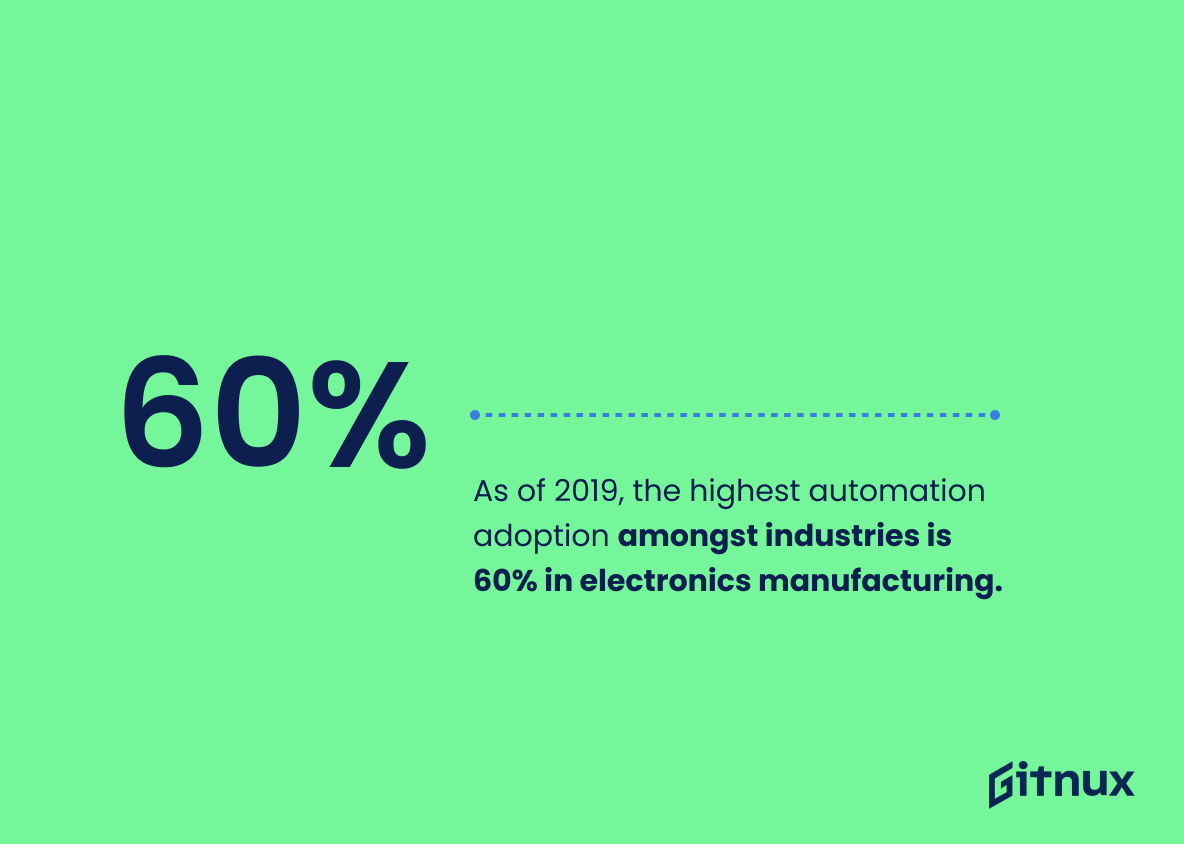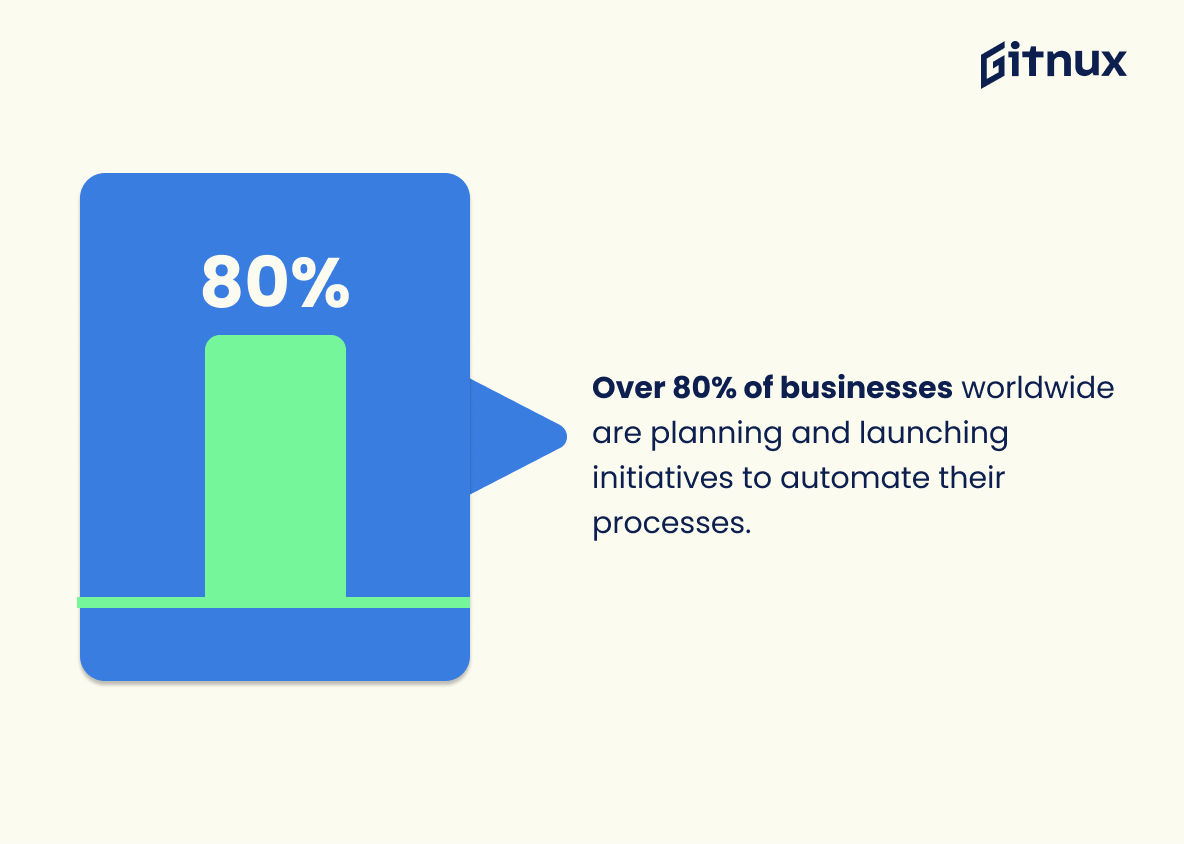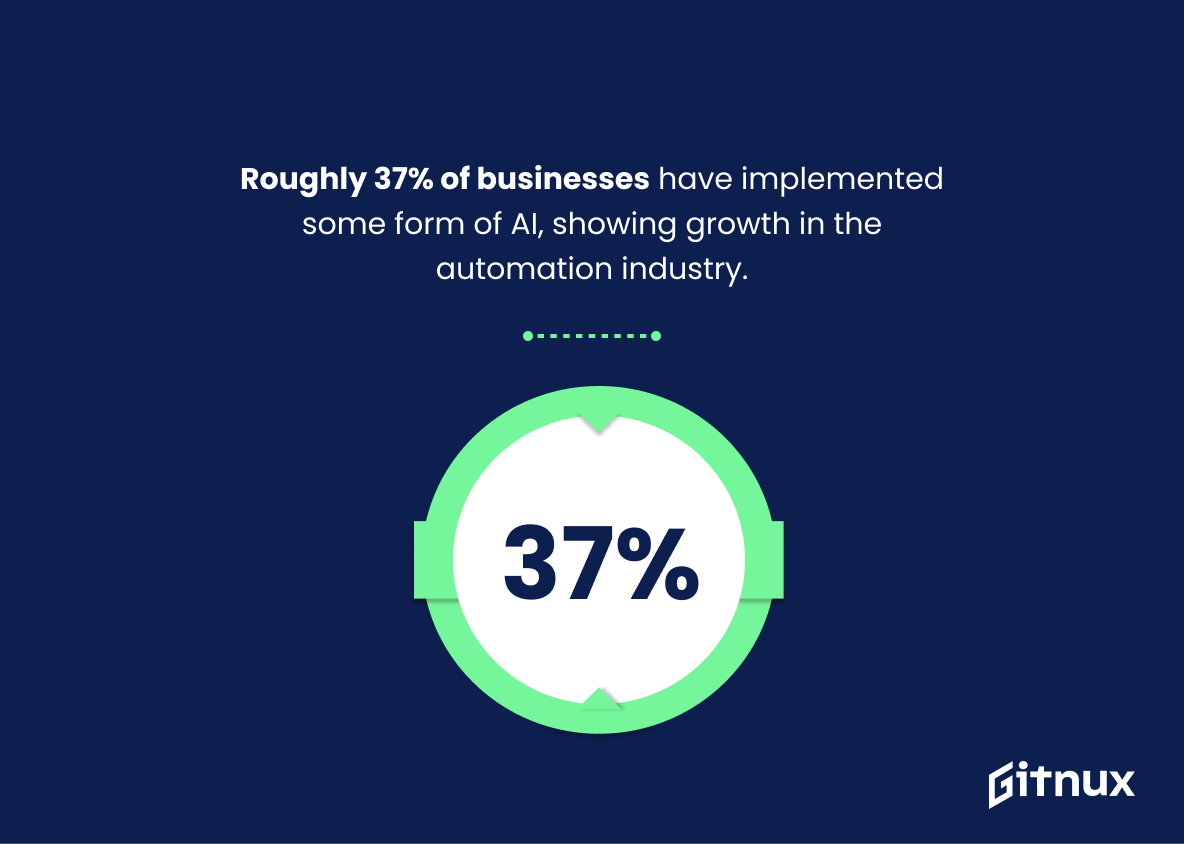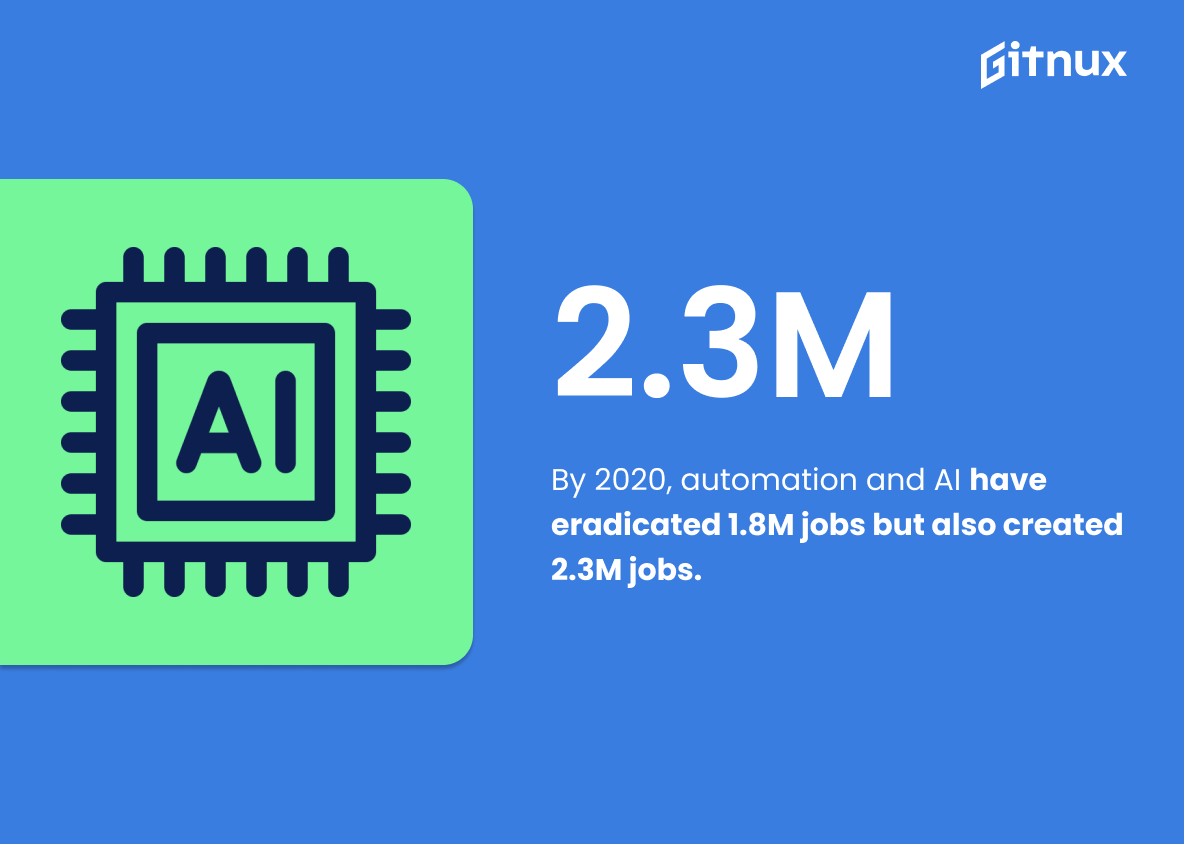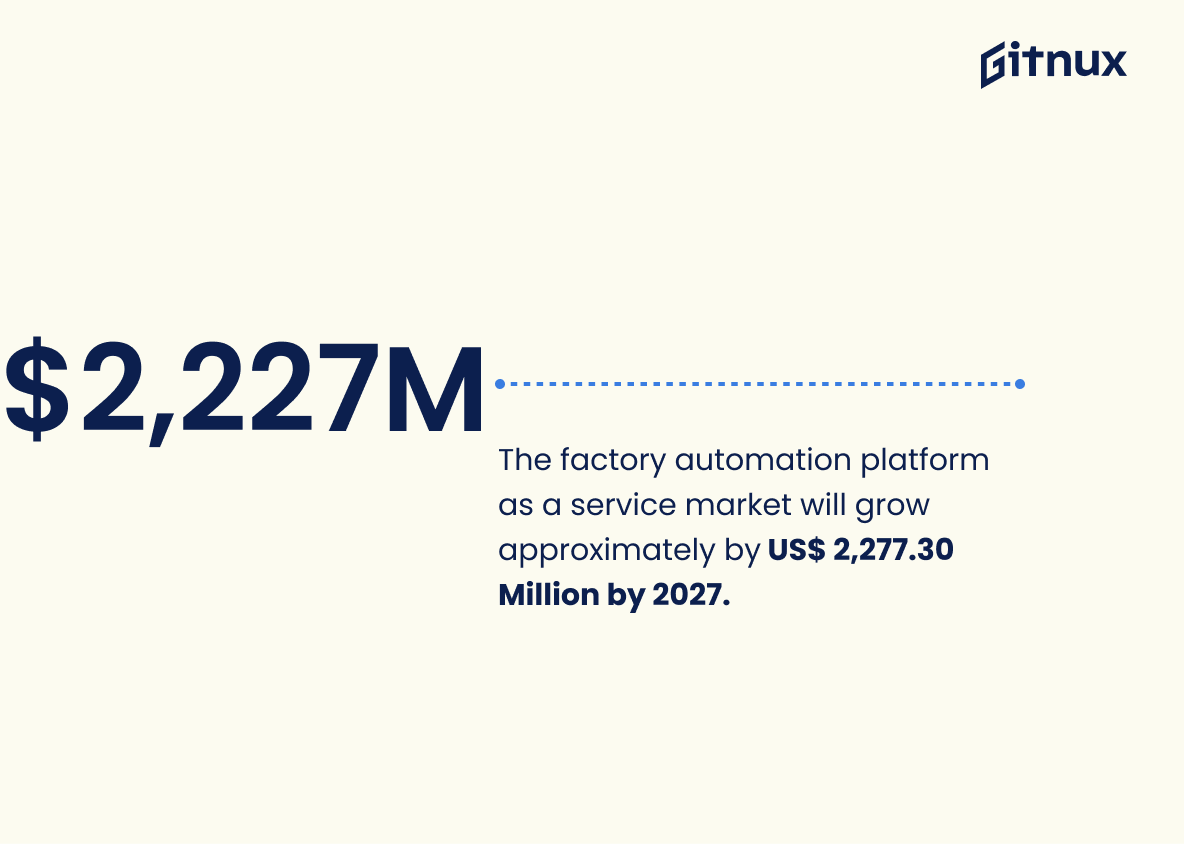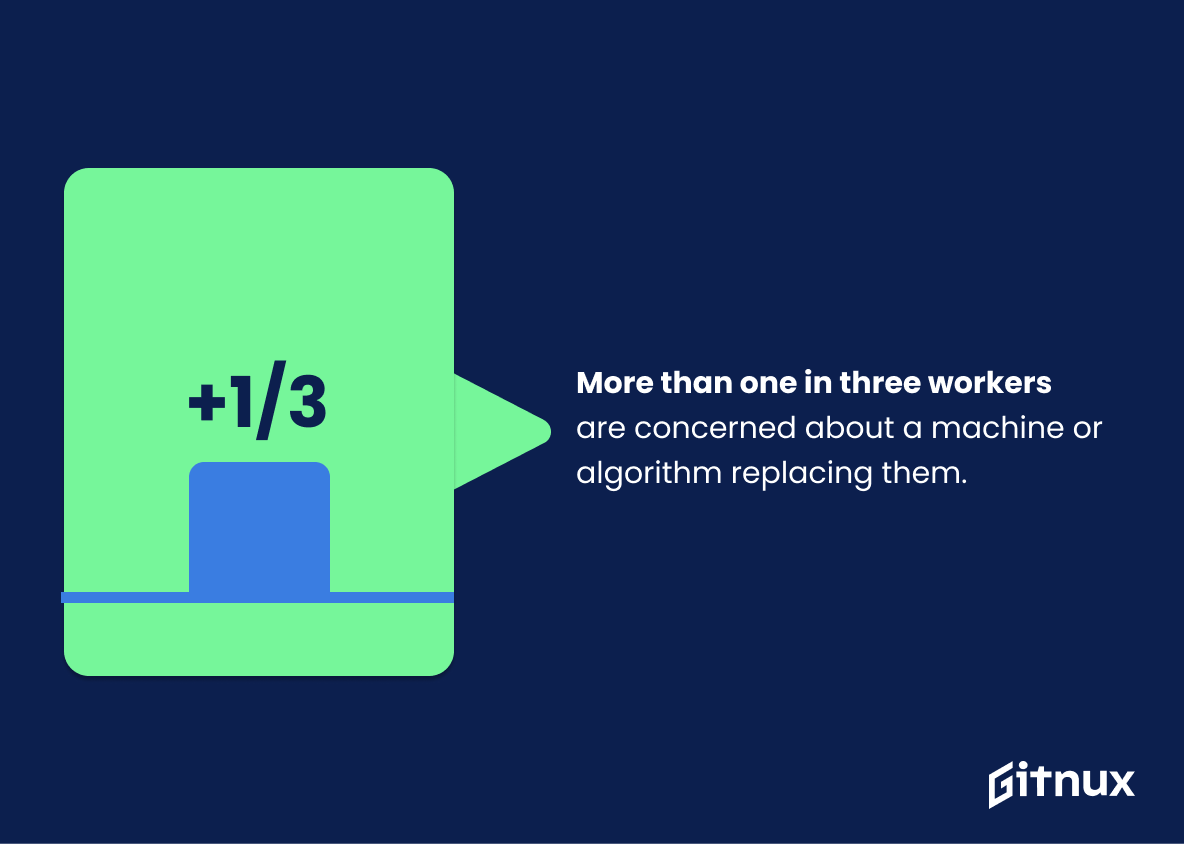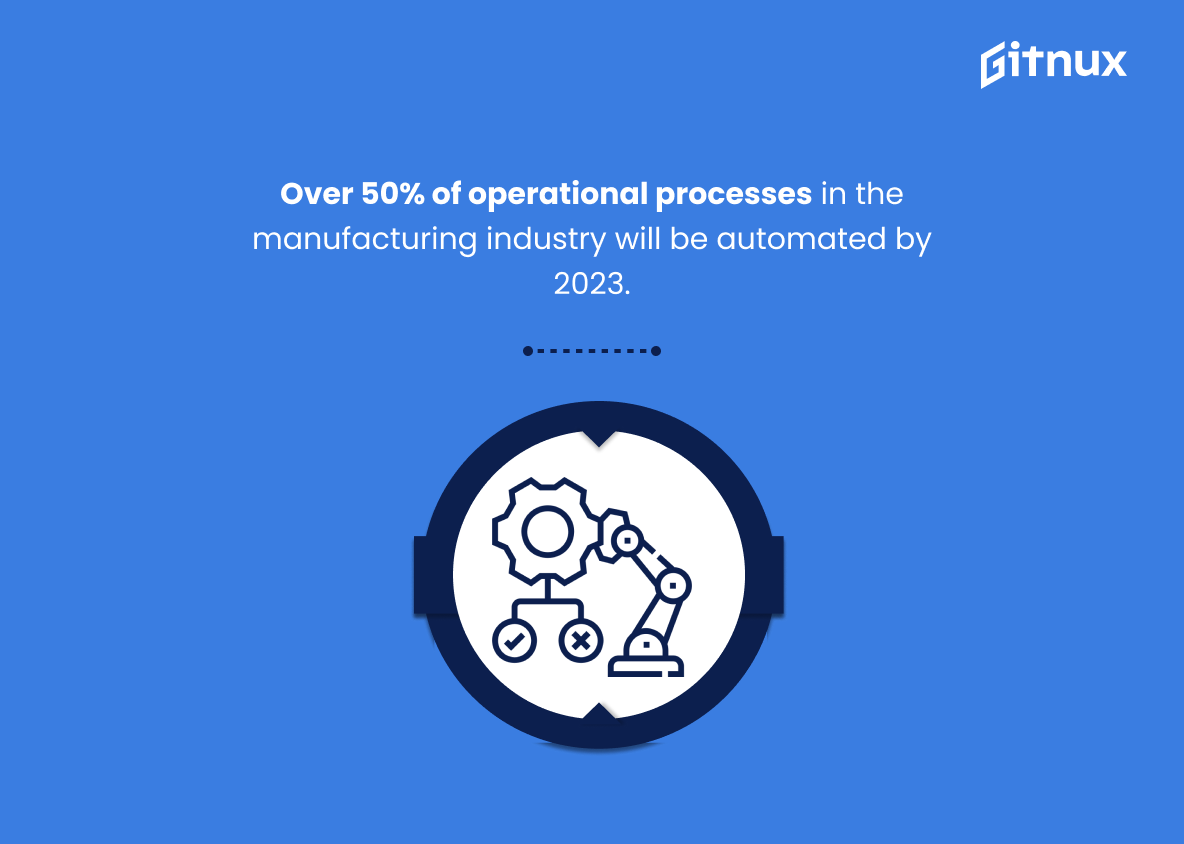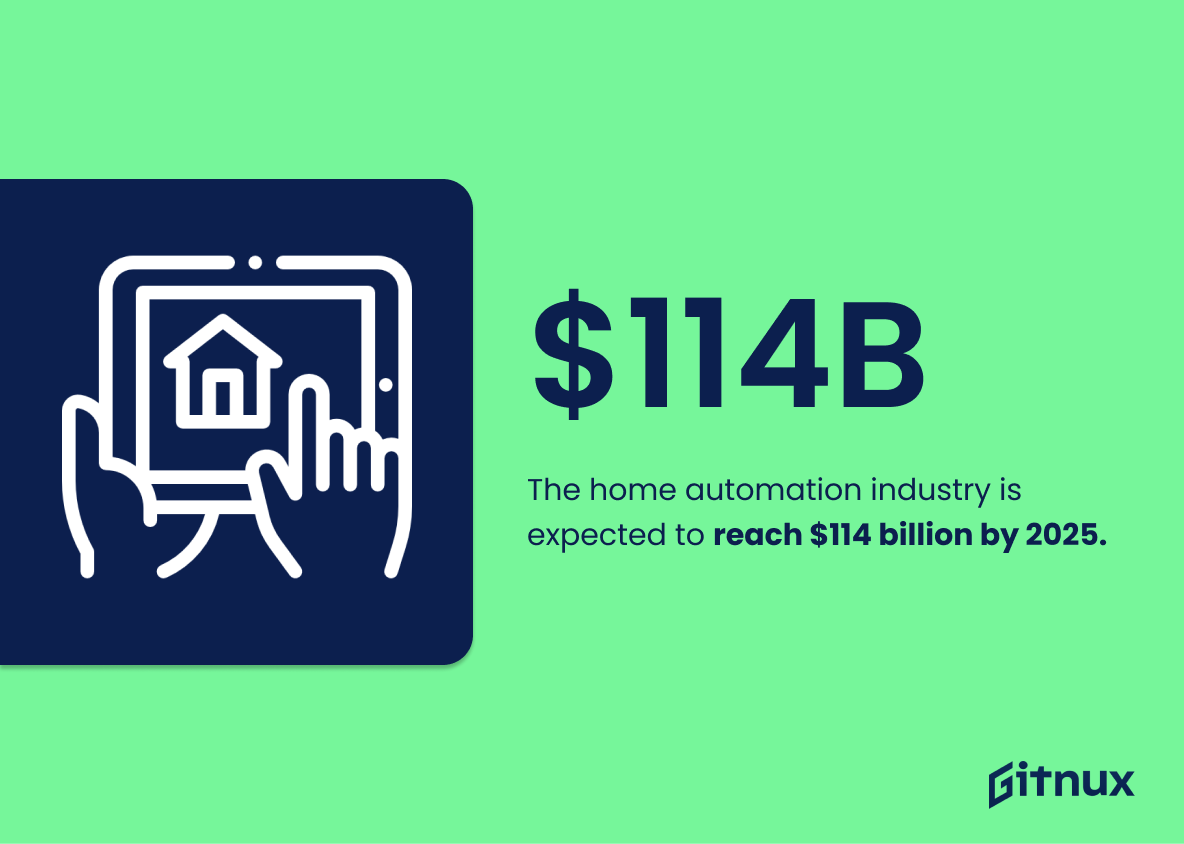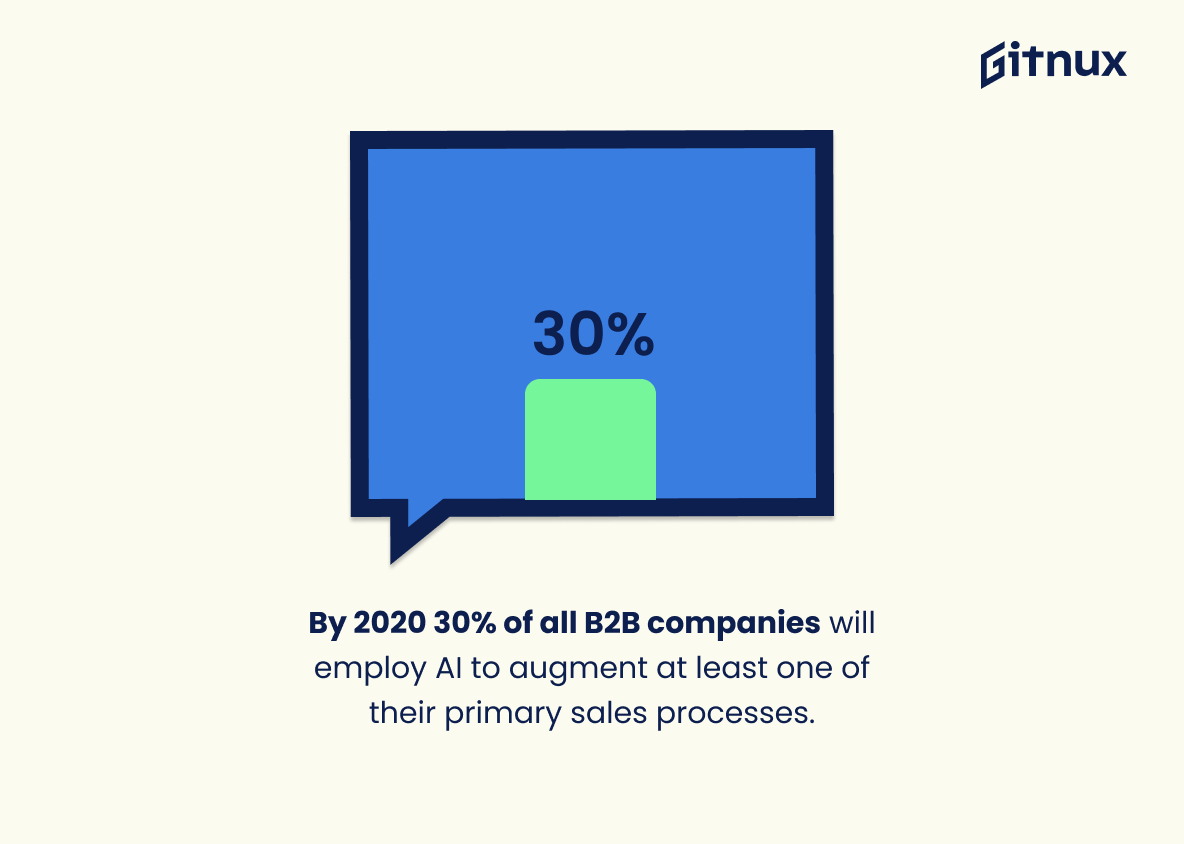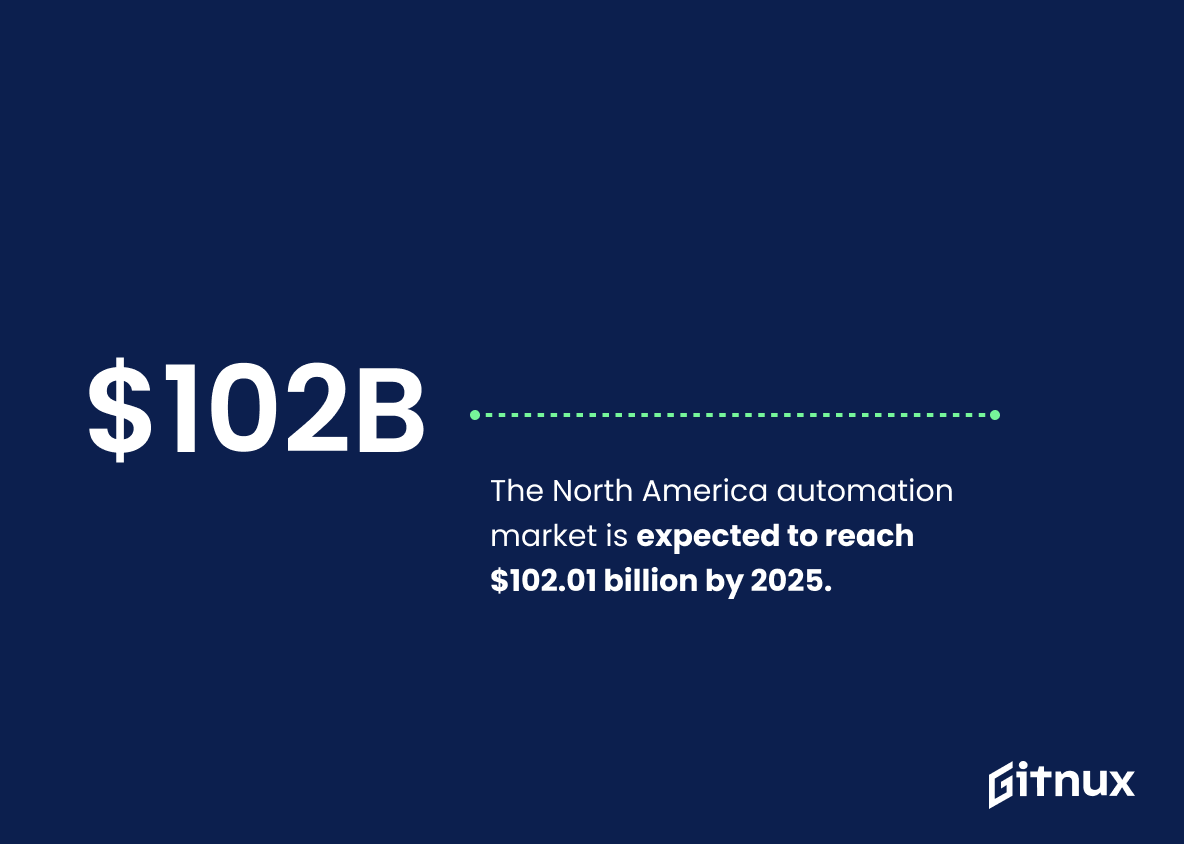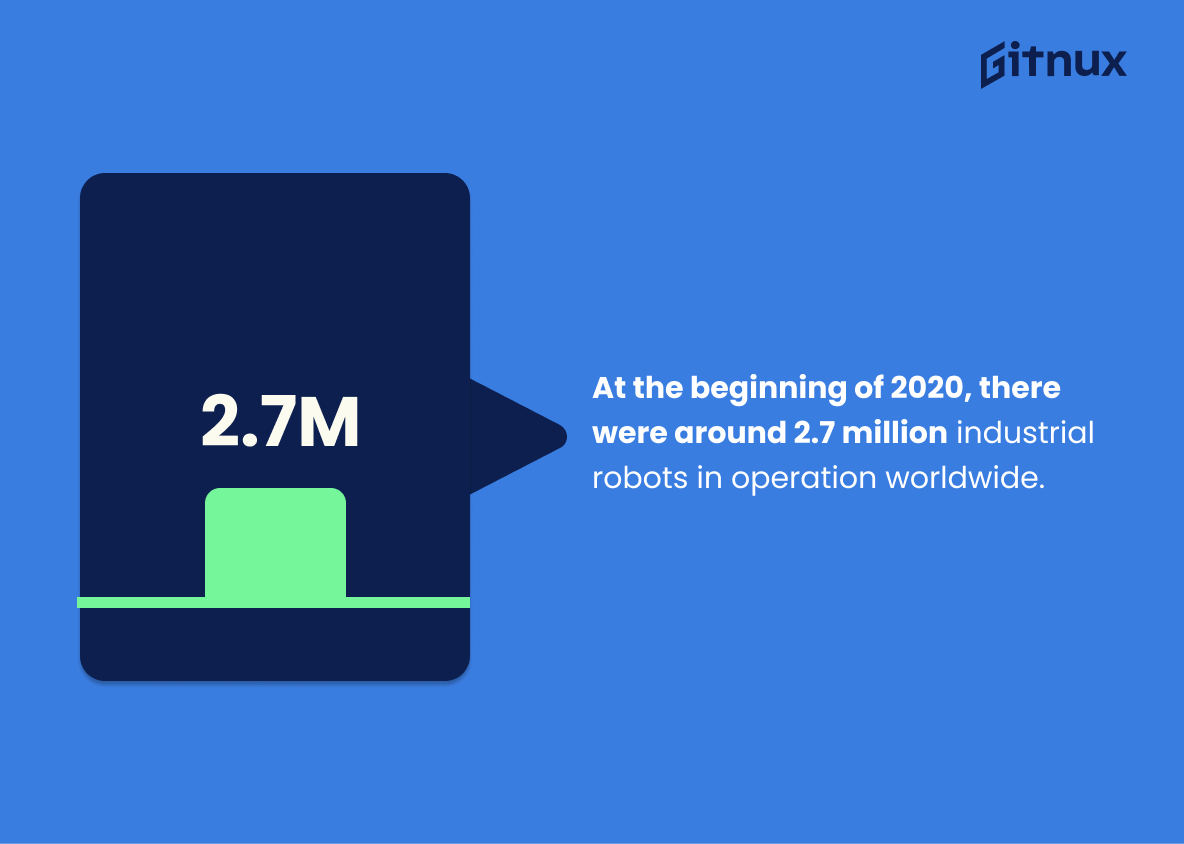Navigating the rapidly evolving landscape of the automation industry can be complex and challenging, especially without a firm understanding of the data driving the changes. Welcome to our comprehensive deep dive into the world of automation industry statistics. Consider this your unveiling guide, where we dissect, interpret, and forecast the impacts of the key data that is reshaping this dynamic sector, illuminating the trends and opportunities that are not only transforming businesses but also the very fabric of our daily lives.
Whether you’re a business leader seeking informed insights or a tech enthusiast keen on the latest developments, this post will serve as your roadmap to understanding the granular details and broader implications of this burgeoning industry. Let’s embark on this journey together, decoding the numbers and narratives behind the automation industry’s growth story.
The Latest Automation Industry Statistics Unveiled
By 2025, the global industrial automation market is predicted to reach a value of over $326.14 billion.
This prediction paints a vivid picture of the future, a grand tableau where the industrial automation market dominates with a staggering worth of over $326.14 billion by 2025, demonstrating exponential growth. This vista embarks our imaginations on a journey to a world where automation shapes the industries. Foreseeing such prosperity, it’s clear that this statistic is a clarion call to investors, businesses, and entrepreneurs who wish to keep pace with future technology trends.
Such upswing in the industry’s value highlights the crucial role automation will play in optimizing productivity, elevated efficiency, and reduced labor costs. This revelation also serves as a beacon, guiding the decision-making process of businesses and policy-makers alike, underpinning the importance of adaptability and foresight in this rapidly evolving market.
The automation industry is estimated to eliminate 73 million jobs by 2030, but it could also create 133 million new jobs.
Peering into the dynamic world of the automation industry reveals a stark picture of transformation. On one hand, projections of eliminating 73 million jobs by 2030 could instigate a sentiment of widespread fear and defiance. However, it’s the unseen side of the coin, the potential birth of 133 million new jobs that truly highlights the fascinating adaptability of markets and workforce dynamics in this adventurous ride into the territory of the unknown.
This number provides an exciting counter-narrative to the often grim predictions about automation, setting the stage for a compelling discourse in a blog post about Automation Industry Statistics. Recognizing this statistic, thus, awakens readers to the potential for growth, adaptation, and opportunity amidst the ever-evolving technological landscape.
As of 2019, the highest automation adoption amongst industries is 60% in electronics manufacturing.
Illuminating our discussion on the panorama of Automation Industry Statistics, let’s consider this nugget of truth: As of 2019, electronics manufacturing harnessed the power of automation in 60% of its processes. This is a powerhouse statistic, as it underlines the vanguard nature of this sector, leading the charge in transforming traditional manufacturing operations into dynamic, automated systems.
It sets a concrete benchmark for other industries, highlighting the pace of technological integration. More importantly, for our readers, it offers a glimpse into the future where the balance between human skill and automated efficiency will define an industry’s competitive edge. As we delve deeper, this statistic serves as the perfect launchpad into the intricate world of automation industry statistics.
Over 80% of businesses worldwide are planning and launching initiatives to automate their processes.
Undeniably, the statistic sheds a penetrating light on the dynamic shift occurring across the global business landscape; a substantial majority – over 80% – are actively initiating efforts to integrate automation into their processes. Interpreting this data within the framework of a blog post about Automation Industry Statistics reveals a profound narrative of technological transformation.
Businesses are not just flirting with the fringes of automation, but instead, they are immersing themselves deeply into this technological realm, triggering a domino effect of anticipated efficiency, cost reduction, and enhanced productivity. The sheer volume of businesses leaning towards automation paints a promising and vibrant future for the automation industry, underlining its pervasive influence and marking it as a cornerstone in the advancing saga of modern enterprise.
Roughly 37% of businesses have implemented some form of AI, showing growth in the automation industry.
Reflecting an exciting wave of technical innovation across industries, approximately 37% of businesses are now utilizing some form of Artificial Intelligence. Such a statistic underscores the burgeoning prevalence of AI in today’s digitized marketplace, providing crucial context to contemporarily dissect the ongoing trajectory of the automation industry.
The evident acceleration in AI-adoption indicates an escalating reliance on intelligent automation, signifying an essential pivot towards technologically-based solutions in modern business models. Therefore, this statistic is a pivotal compass within the expansive terrain of automation trends, offering deep insights into the current and future dynamics of this evolving global industry.
By 2020, automation and AI have eradicated 1.8M jobs but also created 2.3M jobs.
Undeniably, the proclamation of net job creation being positive due to automation and AI captures the limelight. It serves as a beacon of calm, dispelling fears that these technologies will incite widespread unemployment. Emphasizing the 2.3 million jobs created, rather than the 1.8 million curtailed, paints a more hopeful picture of the future.
Equilibrium on the employment scale is not just shifting but tilting towards creation, reaffirming that automation is not a Dementor sucking away jobs but a propelling force sparking new ones. These numbers stand as testament to the resilient adaptability of our economies, veering towards a horizon where humans and AI can coexist to augment productivity. The statistics powerfully underscores the reality of technological advancement’s duality: a disruptor as well as a career path creator.
The industrial automation market is expected to grow at a CAGR of 6.6% from 2020 to 2025.
Embarking on a journey through the landscape of Automation Industry Statistics, we stumble upon a gem; the industrial automation market foresees a 6.6% Compound Annual Growth Rate (CAGR) from 2020 to 2025. Now, this isn’t just a number catching the eye, it’s a beacon guiding the course of the industry.
As we delve deeper, this sparkler illuminates a future where automation’s imprint on industry is magnified. It envisages a rosy, inevitable evolution driven by technological advancements and an uptick in productivity levels. It’s the lifeblood pulsating through every hushed discussion about efficiency, scalability, and cost reduction in the corners of the industry.
Moreover, it’s the key unlocking the door to understanding the pace at which the robotics, artificial intelligence, or machine learning arm of the automation industry will spread its wings. And isn’t that essential in this era, where staying ahead equals survival?
Finally, this figure serves as a lighthouse for those wandering in the sea of investment decisions. It’s the North Star pointing towards a destination where returns could flourish for investors, indicating that the industrial automation market is not just surviving, but thriving in the storms of economic change.
Hence, think of this 6.6% CAGR not just as a statistic, but as a compass, guiding one and all through the labyrinth of Automation Industry Statistics. A number has never held such power, don’t you agree?
The factory automation platform as a service market will grow approximately by US$ 2,277.30 Million by 2027.
Unwrapping the potential of the automation industry, the predicted growth of the factory automation platform as a service market by a staggering US$ 2,277.30 Million by 2027 casts a spotlight on the highly progressive trajectory of this sector. This ascension in market value serves as a resonance of the symbiotic relationship between automation and industry, emphasizing the increasing reliance on these platforms to enhance efficiency, productivity and cost-effectiveness.
In the grand tableau of automation industry statistics, this future projection not only underscores the sector’s lucrative growth but is also a clear testament to a global shift towards more sophisticated, automated systems in industrial practices. Let this be your compass guiding you through the dynamics of the automation industry, and your lens discerning the magnitude of its potential in world economy.
More than one in three workers are concerned about a machine or algorithm replacing them.
Peering through the lens of this striking figure, “More than one in three workers are concerned about a machine or algorithm replacing them,” it is clear that the future of work is occupying a significant portion of the workforce’s minds. The Automation Industry can decipher several critical implications from these concerns. Firstly, it illuminates the growing sentiment of job insecurity due to rapid technological advancements.
This perspective can potentially drive resistance among workers, shaping the way companies approach the deployment of automation technology. Secondly, it underscores an urgent need for upskilling and retraining initiatives, accentuating the role of education sectors in preparing workers for an automated future. Lastly, this statistic coaxes policy-makers to consider the socio-economic impacts of extensive automation, creating a path to ensure a balanced co-existence of humans and technology in the work environment.
Over 50% of operational processes in the manufacturing industry will be automated by 2023.
Unveiling the curtains to the future of the manufacturing industry, the statistic highlights an imminent paradigm shift towards automation. This suggestive prediction of over 50% of operational processes being automated by 2023 not only forecasts a technological revolution, but also implies substantial implications for labor demand, the skills required and industry standards.
As a harbinger of opportunities, risks, and challenges, this statistic takes center stage in navigating the narrative of automation industry statistics, effectively turning ink into alive discourse on the diverse impact of automation.
The home automation industry is expected to reach $114 billion by 2025.
Imagine drawing a map of the future, and right there – at the intersection of technological advancement and consumer preference – you spot a thriving metropolis named Home Automation. This $114 billion estimate for the Home Automation Industry by 2025 isn’t just another digit in the financial forecast. It is a concrete representation of predictable shifts in lifestyle, consumer choices and spending potential.
This potent figure reinforces the narrative that homes will continue to get smarter, technologies more intrinsically embedded in everyday life, hence creating a multitude of opportunities for investors, entrepreneurs and consumers in the automation world. In essence, it offers both a foresight and a challenge. It’s a window into an increasingly automated future while also being a reminder – for businesses in the sector and those eyeing it, to shift gears and adapt for a significant slice of the surging pie.
By 2020 30% of all B2B companies will employ AI to augment at least one of their primary sales processes.
Delving into the world of Automation Industry Statistics, it’s quite an intriguing revelation to grasp that, as of 2020, AI has secured a prominent role in the B2B sales process of almost one in three companies. This surge in AI adoption reflects a monumental shift in the dynamics of business methodologies, as these enterprises harness artificial intelligence to refine and enhance critical sales procedures.
The growing confidence in AI’s potential signals a remarkable pivot towards automated and data-driven decisions in the industrial landscape. Indeed, this rise in AI augmentation within B2B companies showcases not only the thriving advancement in tech but also its cascading effect on boosting operational efficiency, predictive accuracy, and overall profitability for businesses.
The North America automation market is expected to reach $102.01 billion by 2025.
Forecasting a value of $102.01 billion by 2025, the North America automation market casts a promising shadow of growth and potential. This figure becomes a cornerstone in a blog about Automation Industry Statistics as it outlines not only the substantial financial prospects, but also the accelerating rate of technological innovation and adoption in this region.
It draws a clear picture of an industry on the rise, destined to shape the future economy and society. This emblematic statistic stands testament to the enormous market demand and paints the market panorama for entrepreneurs, investors, and technology enthusiasts alike. Understanding this figure, therefore, provides the key to unlock a world of possibilities in the realm of automation.
At the beginning of 2020, there were around 2.7 million industrial robots in operation worldwide.
Smuggled into the heart of the new decade, the remarkable number of 2.7 million operational industrial robots worldwide seems to unveil a realm of technology where insensate metallic limbs have caught up with fanciful human ambition. This number serves as a metallic barometer of the rapid acceleration of automation in industries globally. It not only emphasizes the dawn of a new industrial age – characterized by increased efficiency, reduced human error, and heightened safety – but also underscores the inevitable technological revolution that is set to redefine workspaces.
This subtle yet seismic shift has the potential to exponentially enhance productivity and profitability, while simultaneously igniting a discourse on job displacement, workforce upskilling, and socio-economic dynamics. Indeed, this statistic is a riveting account of how global industries have forged an alliance with robots, setting the stage for an intriguing saga of the co-existence of man and machine.
By 2023, there will likely be 20 million jobs in the robotics sector.
Forecasting an impressive 20 million job opportunities by 2023, the robotics sector promises a dynamic shift in employment landscape. This tantalizing projection not only acts as a testament to the rising predominance of robotics in industrial automation but also offers a counter-argument to the fear of job loss due to automation.
Highlighting this statistic in a discussion around Automation Industry Statistics underscores the future-forward trend of job creation in new technology sectors, setting aside conventional employment sectors. Investors, policy makers, and workers can therefore see robotics not as a threat, but as an avenue teeming with exciting prospects and newfound opportunities, redefining the industrial narratives of the 21st century.
Conclusion
The Automation Industry is indisputably experiencing a significant surge, as seen from the staggering statistics we’ve covered in this post. Automation’s incalculable benefits and roles across various sectors such as manufacturing, healthcare, and e-commerce are driving growth trends. Not only is automation rewriting the ways we work, but it’s also propelling economic progression, enhancing productivity and accuracy.
As we continue to tread further into the digital age, companies embracing automation will likely supplant those reluctant to adapt, thus continually reshaping the competitive landscape. Therefore, staying informed about the sector’s latest stats and trends is crucial for businesses wishing to remain relevant and competitive in the ever-evolving market. Remember, automation is not tomorrow’s dream – it is today’s reality.
References
0. – https://www.www.globenewswire.com
1. – https://www.www.marketsandmarkets.com
2. – https://www.www.gartner.com
3. – https://www.www.grandviewresearch.com
4. – https://www.ifr.org
5. – https://www.www.fortunebusinessinsights.com
6. – https://www.www.alliedmarketresearch.com
7. – https://www.www.technavio.com
8. – https://www.www.gallup.com
9. – https://www.www.idc.com
10. – https://www.www.statista.com
11. – https://www.www.pwc.com
